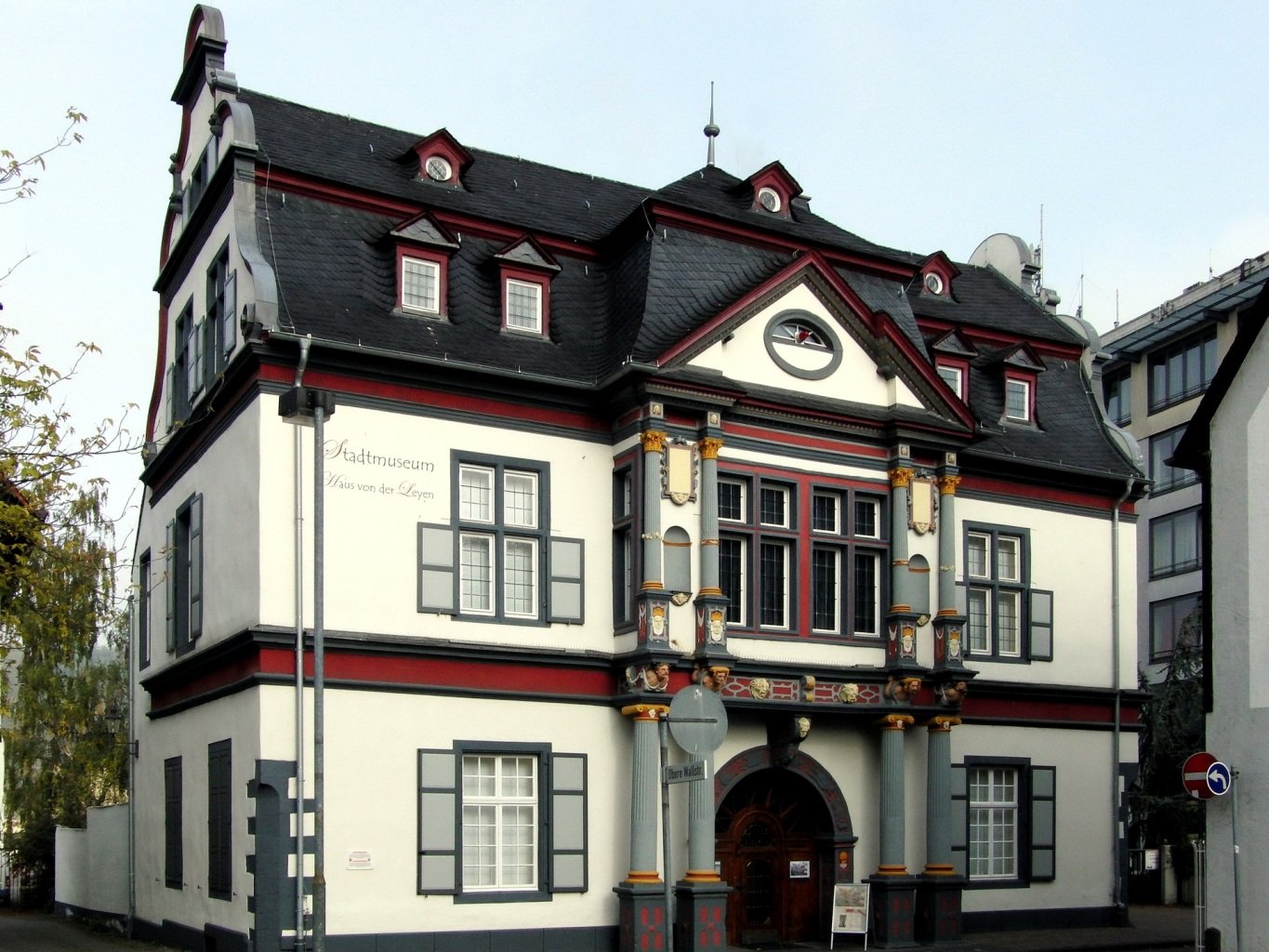#298. The "Haus von der Leyen" Museum: German facade with contrasting colors and mansard roof
Before us stands an excellent example of German historical architecture — the city museum "Haus von der Leyen," as indicated on the building's facade. This structure demonstrates a classic example of regional style with characteristic elements of the Germanic architectural tradition.
The building's facade features an expressive combination of white walls with contrasting black and red trim. Particularly notable is the mansard roof with black tiles and red accents, crowned with several dormer windows featuring round clocks. This type of roofing is not only functional but also gives the building a distinctive silhouette that could be adapted when designing the facade of a modern home in neoclassical or historical style.
The facade decoration employs elements traditional to German architecture: decorative columns framing the central entrance, a pediment with a rosette window, and contrasting window frames with traditional shutters. The rich decor of the entrance area deserves special attention, with ornamental column capitals and carved elements.
The color scheme of the facade is built on a classic combination of white, black, and red, creating a bright, memorable image. This technique can be successfully used in modern architecture to create contrasting accents on the facade, highlighting architectural details.
The symmetry of the facade, combined with intricately crafted decorative elements, gives the building a ceremonial, official appearance, appropriate to its public purpose. The skilled use of window openings of different sizes is notable, creating a rhythmic composition on the facade.
